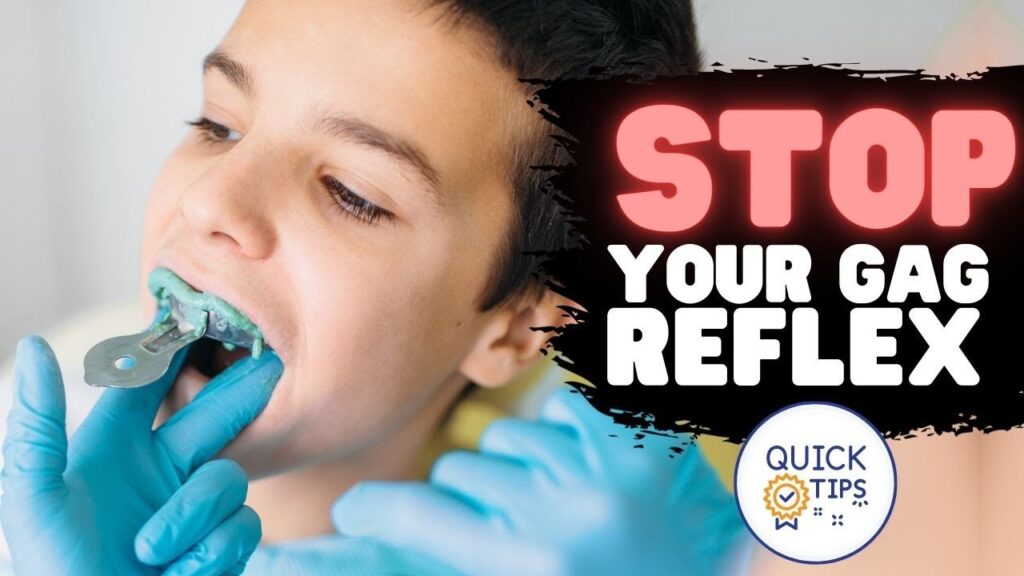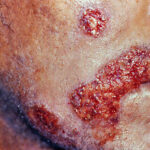The gag reflex, or pharyngeal reflex, is a normal protective response triggered by stimulation of the oropharyngeal region. While its purpose is to prevent aspiration, an overactive gag reflex can interfere significantly with dental, medical, and even speech-related procedures. Managing this reflex is essential in clinical settings, especially during dental impressions, endoscopic examinations, or prosthetic fittings.

Anatomy and Physiology of the Gag Reflex
The gag reflex involves both sensory and motor components:
- Sensory Input: Glossopharyngeal nerve (cranial nerve IX) detects stimuli at the soft palate, posterior tongue, and pharynx.
- Motor Response: Vagus nerve (cranial nerve X) induces muscular contraction of the pharynx and larynx.
In some patients, this reflex is hypersensitive, causing discomfort and limiting procedural compliance.
Causes and Triggers of a Hypersensitive Gag Reflex
Understanding the etiology is essential to choosing an appropriate management strategy. Common triggers include:
- Tactile Stimuli: Dental instruments, tongue depressors, impression trays
- Psychogenic Factors: Anxiety, fear, previous traumatic experiences
- Somatic Conditions: GERD, postnasal drip, medications affecting neural sensitivity
Identifying whether the cause is somatic or psychogenic informs the intervention method.
Behavioral Techniques for Gag Reflex Suppression
1. Desensitization Therapy
A stepwise approach where the patient is gradually exposed to triggering stimuli.
- Use of toothbrush or swabs to stimulate the soft palate daily
- Start from anterior palate and move posteriorly as tolerance builds
- Consistency is critical—daily practice enhances adaptation
2. Relaxation and Breathing Techniques
Helps minimize psychogenic triggers by engaging the parasympathetic nervous system.
- Deep, rhythmic nasal breathing
- Distraction methods (e.g., music, guided imagery)
- Muscle relaxation techniques before and during the procedure
3. Cognitive Behavioral Therapy (CBT)
In chronic cases, referral to a behavioral therapist may be warranted.
- CBT addresses anxiety and negative conditioning
- Often effective in patients with procedural phobia or panic history
Pharmacological and Topical Gag Reflex Suppression
1. Topical Anesthetics
Local anesthetics effectively reduce pharyngeal sensitivity.
- Benzocaine Spray: Fast-acting; applied to soft palate and oropharynx
- Lidocaine Gel or Spray (2–10%): Longer duration; suitable for extended procedures
Caution is advised to avoid overapplication, which may impair swallowing reflexes and increase aspiration risk.
2. Systemic Agents
Reserved for cases where local measures fail.
- Midazolam or Diazepam: For highly anxious patients
- Nitrous Oxide Sedation: Common in dentistry; relaxes musculature and reduces central sensitivity
- Anticholinergics (e.g., glycopyrrolate): Reduces secretions that may provoke gagging
Mechanical Techniques to Control the Gag Reflex
1. Salt Technique
Placing a small pinch of salt on the tip of the tongue during triggering procedures.
- Activates gustatory stimuli that override gag reflex arc
- Works via sensory distraction along cranial nerve VII pathways
2. Tongue Pull Method
Instructing the patient to hold or pull their tongue outward with gauze.
- Alters position and reduces posterior contact
- Effective in brief procedures such as digital impressions
3. Hand Pressure or Leg Elevation
Applying pressure to the palm or lifting a leg during the procedure.
- Based on counter-stimulation principles
- Distracts the central nervous system to shift focus away from gag reflex
Dental-Specific Interventions and Prosthodontic Modifications
Impression Taking and Prosthetic Fitting
Patients with strong gag reflexes often struggle with traditional impression techniques.
- Digital Scanning: Eliminates need for impression trays
- Custom Trays: Reduce volume of impression material
- Backless Dentures: In patients intolerant to posterior palatal coverage
Clinical Positioning
- Seat the patient in an upright or semi-supine position
- Avoid stimulation of the soft palate when possible
- Keep procedures short and communicate clearly throughout
Surgical and Neuromodulatory Interventions (In Refractory Cases)
In rare, extreme cases:
- Glossopharyngeal nerve block may be considered, typically performed under anesthesia
- Hypnotherapy has demonstrated efficacy in select patients
- Transcutaneous electrical nerve stimulation (TENS) may modulate sensory perception in experimental settings
Multimodal Suppression of the Gag Reflex
Effective suppression of the gag reflex requires a personalized, multimodal strategy integrating behavioral training, topical pharmacology, and mechanical desensitization. Identifying the underlying cause—psychological or somatic—is key to selecting appropriate interventions. Through patient-centered care, we can optimize procedural success, reduce anxiety, and enhance clinical outcomes.

